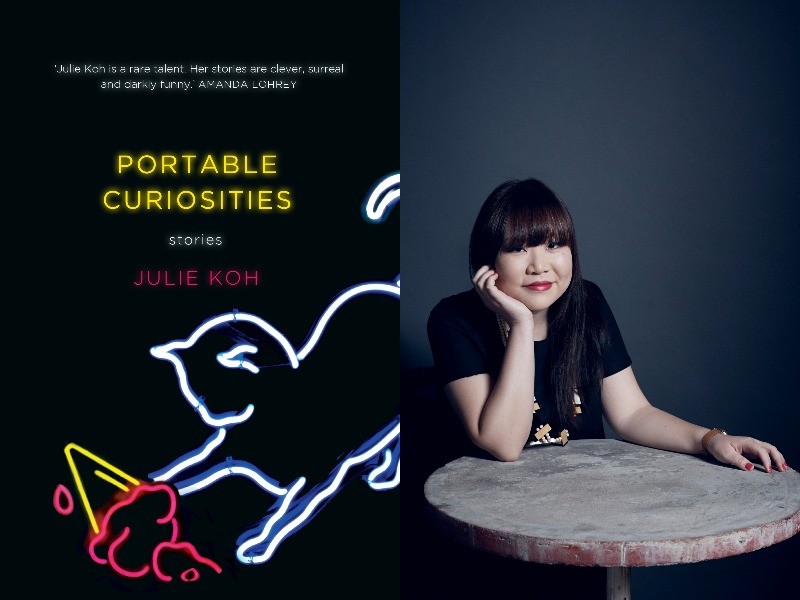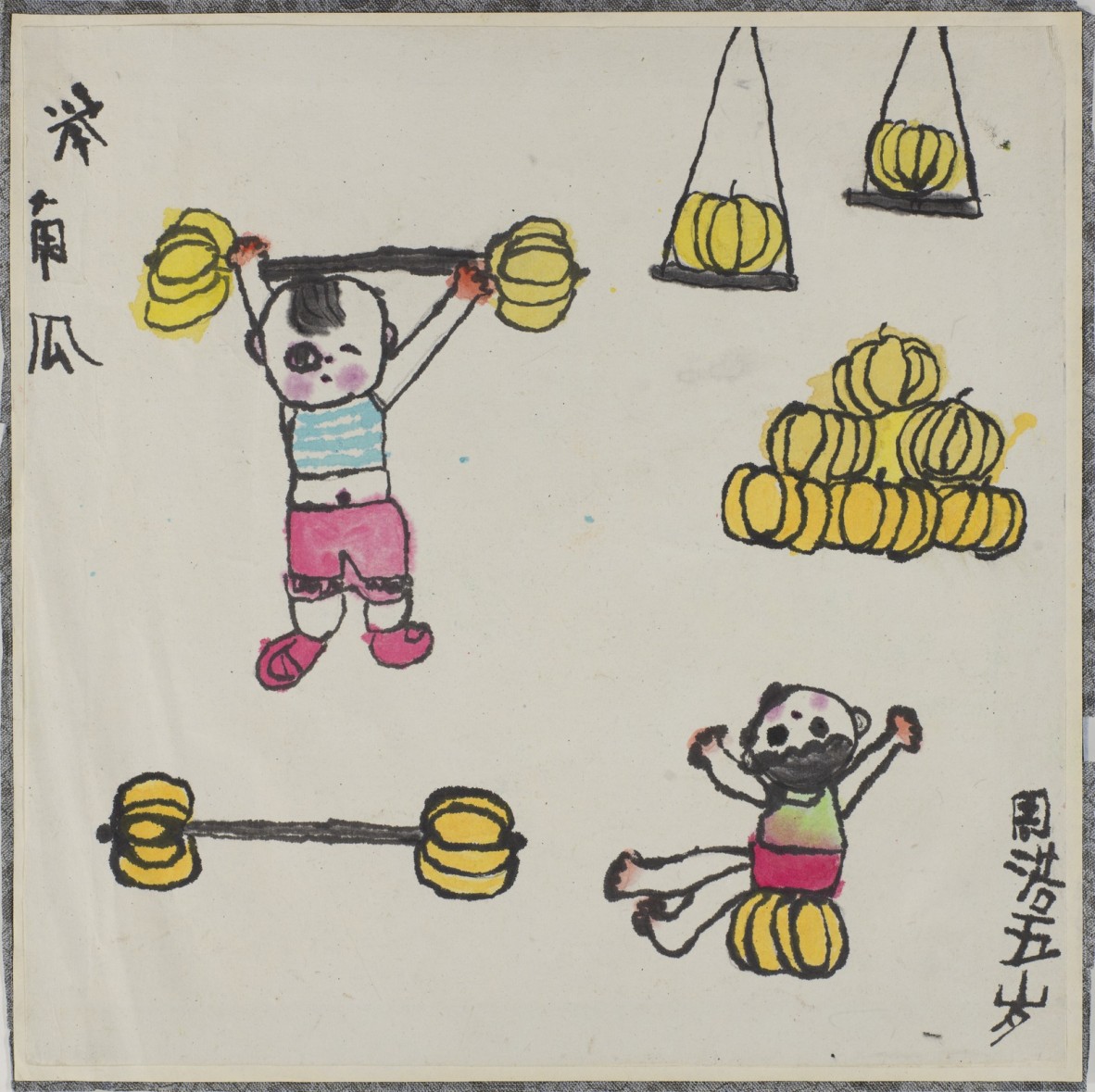Writers are always collecting. Ideas for stories, poems and books can come from anywhere. Things writers see or touch or read can return – sometimes unexpectedly – in the future to inspire them.
State Library is filled with treasures and curios. In this new series, we invite authors to find an item in our collections that inspires them to write a new, original creative piece of work.
Julie Koh is one of Australia’s most inventive contemporary short story writers, and we’re delighted to welcome her to share a short story she wrote that was inspired by an item in our collection.
Julie browsed our online collections to find her inspiration, since she lives interstate and couldn’t visit the library in person. She became fascinated with Dr Barbara Piscitelli AM’s Children’s Art Archive, which comprises artworks created by children in Australia, Vietnam and China between 1986 and 2020.

Julie Koh is the author of two short-story collections: Capital Misfits and Portable Curiosities. Image composite: cover by UQP, photo of Julie by Hugh Stewart.
I was moved by Dr Piscitelli’s work, which emphasises children’s rights and the value of children’s art across cultures. Her work particularly resonated with me because my mother is a retired preschool teacher. Growing up, I often visited the preschools where Mum worked and saw the art that kids created there.
I loved all the art in Dr Piscitelli’s archive but ultimately focused on a quirky 1995 piece called ‘Lifting pumpkins’ by five-year-old Zhouhao, from Huang Mei County Kindergarten in Hubei, China.
I’ve also recently connected with people who’ve worked with children’s art and literature, which has been inspiring. This year, I contributed a short story to the Peephole Art Tsuyazaki exhibition in the town of Tsuyazaki, Japan. I travelled there in October and met the curator, Naoko Benom-Miura, whose other projects have included picture books and the children’s art initiative Danball Game Center. While in Tsuyazaki, I spoke at an event with Professor Minoru Meguro, a picture-book author who has founded publishing companies, a theatre, and four children’s museums across Japan.
The artwork [reproduced below] was collected as part of a children’s art project, Together Under One Sun, by my Hubei based colleague Chen Zhichao. The exhibition provoked a lot of conversation about children, their ideas and their talent in 1995–1998 when it was exhibited in Hubei and later around Queensland. This wonderful brush drawing of harvest play shows the young artist’s imagination at repurposing weighty pumpkins for gym equipment. – Dr Barbara Piscitelli AM
'Top five tips for lifting pumpkins'
by Julie Koh
1. If you want to get serious about pumpkin-lifting, the pumpkins you lift must be yellow. Ignoring the colour of your pumpkins is a classic beginner’s mistake. It’s also best to go organic. Ideally, your parents will own a nearby field where you can sow your pumpkin seeds. Do this with your little sister in spring and wait for the flowers and bees to come. As the pumpkins swell, be sure to keep them away from birds and other animals by hiding them among the weeds.
2. Listen to expert advice. Your sister is the pioneer, having proposed the first pumpkin-lifting competition between the two of you, which will take place once the summer harvest is over. Pay close attention when she suggests that the pumpkins must not only be sunshine yellow and pesticide-free, but also be of a variety known to screw easily onto either end of a broomstick.
3. Don’t even think about lifting without practising the correct form. As your sister will tell you, form is fashion. A true pumpkin-lifter wears a striped singlet, pink shorts rolled at the bottom, and pink shoes. The singlet should be of a length that ensures your belly button can always breathe. Grooming is also important. The most aerodynamic haircut for pumpkin-lifting is a head that is shaved except for a long fringe that is combed forward. Black liner around one’s right eye is non-negotiable.
4. After you harvest the pumpkins, weigh them, just for fun. Commence your training by lifting the food rainbow – one hundred reps with mulberries, sixty with green beans, twenty-five with corn – before attempting the pumpkin snatch. If you train in this manner, according to your sister, you’ll have muscles contoured like pumpkin shells. You’ll be able to lift so much that you’ll be invited to the Pumpkin Olympics and win gold. Don’t question her approach or she will squeeze your bicep, make a face, and say, ‘Do you even lift, bro?’
5. Vital: do not lose your sister before the first pumpkins can be harvested, to an illness your parents can’t fully explain. When she sits in her wheelchair in spring, supervising your seed-sowing and proposing the competition, don’t brush her off and tell her she’s dreaming. You will regret it. Once she’s gone, the only way you’ll get to see her again is to wait each year of your life until the end of the harvest. You’ll have to take two barbells out into the field – one for you and one for her – and follow her prescribed technique with rigour. Then, and only then, will she appear shining before you, kicking her legs and cheering you on, perched on a pumpkin the colour of the sun.
Julie met artist Takuya Terashima, an artist from Tsuyazaki in Fukuoka. Love pumpkins? Find more vegetable goodness in State Library's collections. Image: Naomi Matsuo.
Author’s note
Thanks to Takuya Terashima and Naoko Eto, two artists I met in Tsuyazaki who work together as the duo nemuharzyu. The two artists are also farmers. When I visited the duo’s pop-up store at Guesthouse Kojiya, they were selling sweet potatoes, eggplant and okra alongside Takuya’s vibrant art. So, mulling over that juxtaposition of art and farm produce, I was primed to select an artwork about pumpkins from Dr Piscitelli’s archive. For this short story, nemuharzyu helped me out by telling me a bit about how they grow pumpkins, though the rest of the story is based on Zhouhao’s artwork and my imagination.
Julie Koh is the author of two short-story collections: Capital Misfits and Portable Curiosities. The latter was shortlisted for several awards and led to Julie being named a 2017 Sydney Morning Herald Best Young Australian Novelist. Julie’s short stories have appeared widely, including in the Best Australian Stories and Best Australian Comedy Writing. Outside Australia, her fiction has been published in nine countries and translated into Chinese, Indonesian, Bengali and Japanese. She has written radio plays for ABC Radio National and the libretto for the satirical opera Chop Chef.
You can read our first Finders Keepers post by Kris Kneen here.
Comments
Your email address will not be published.
We welcome relevant, respectful comments.
